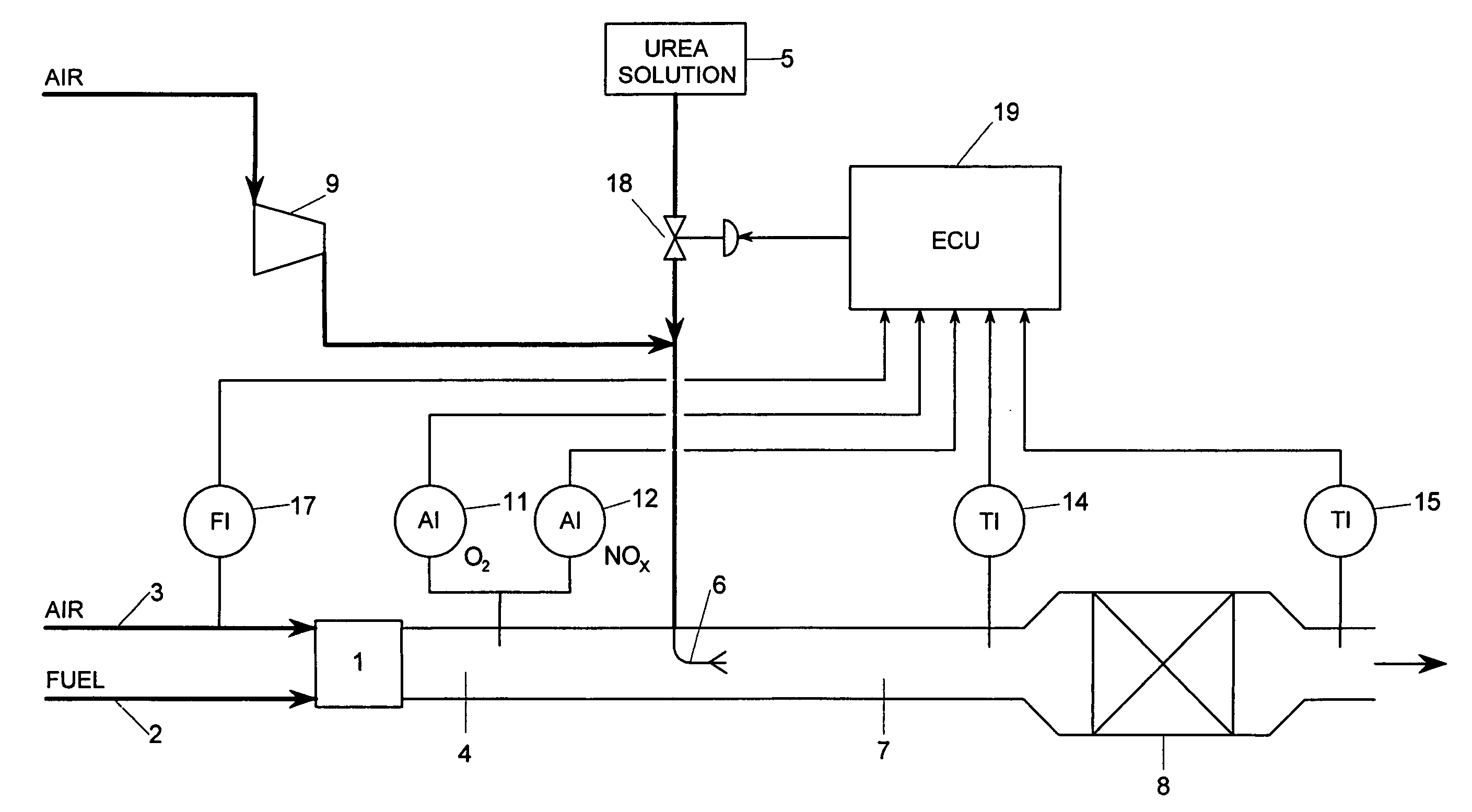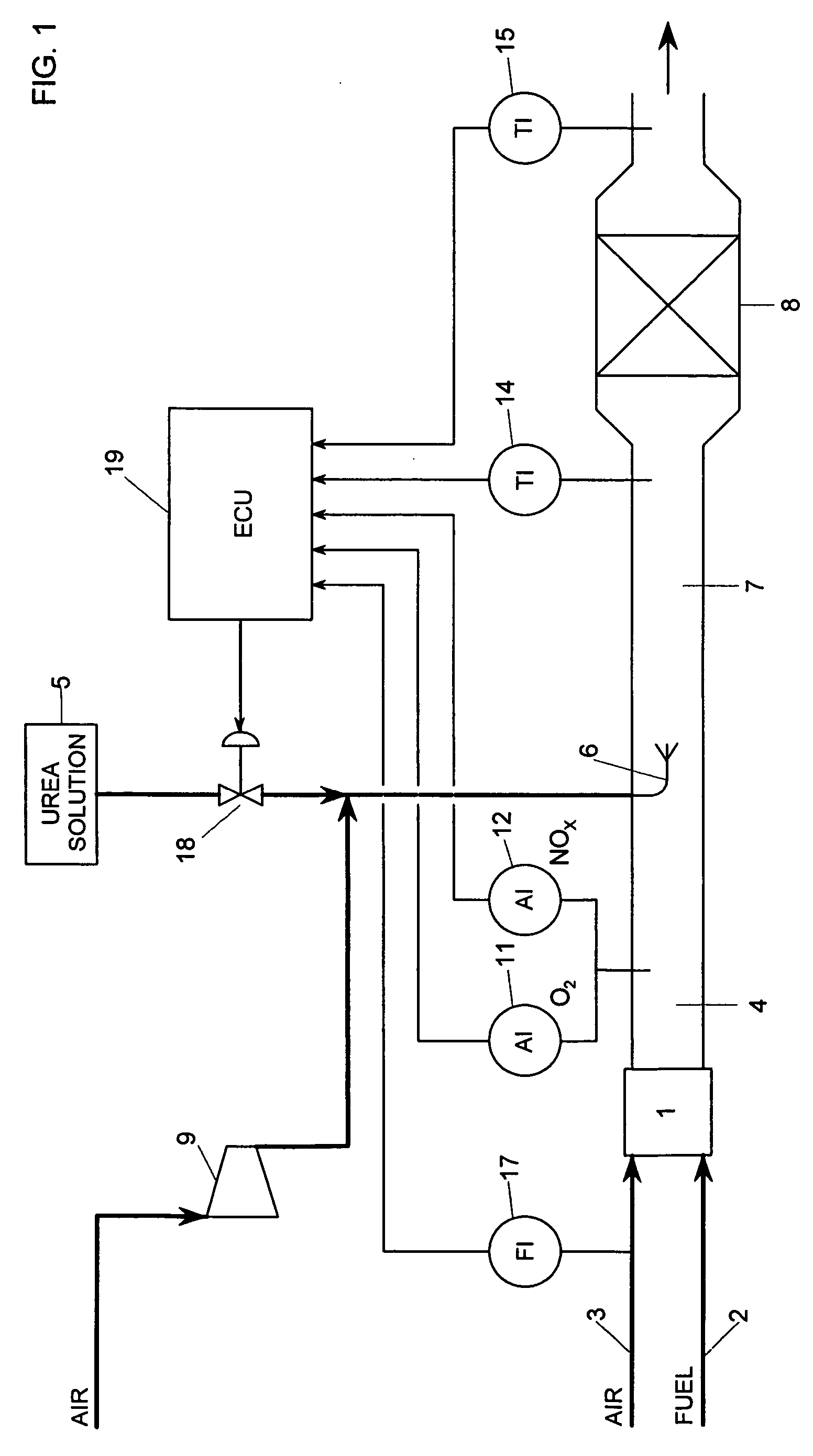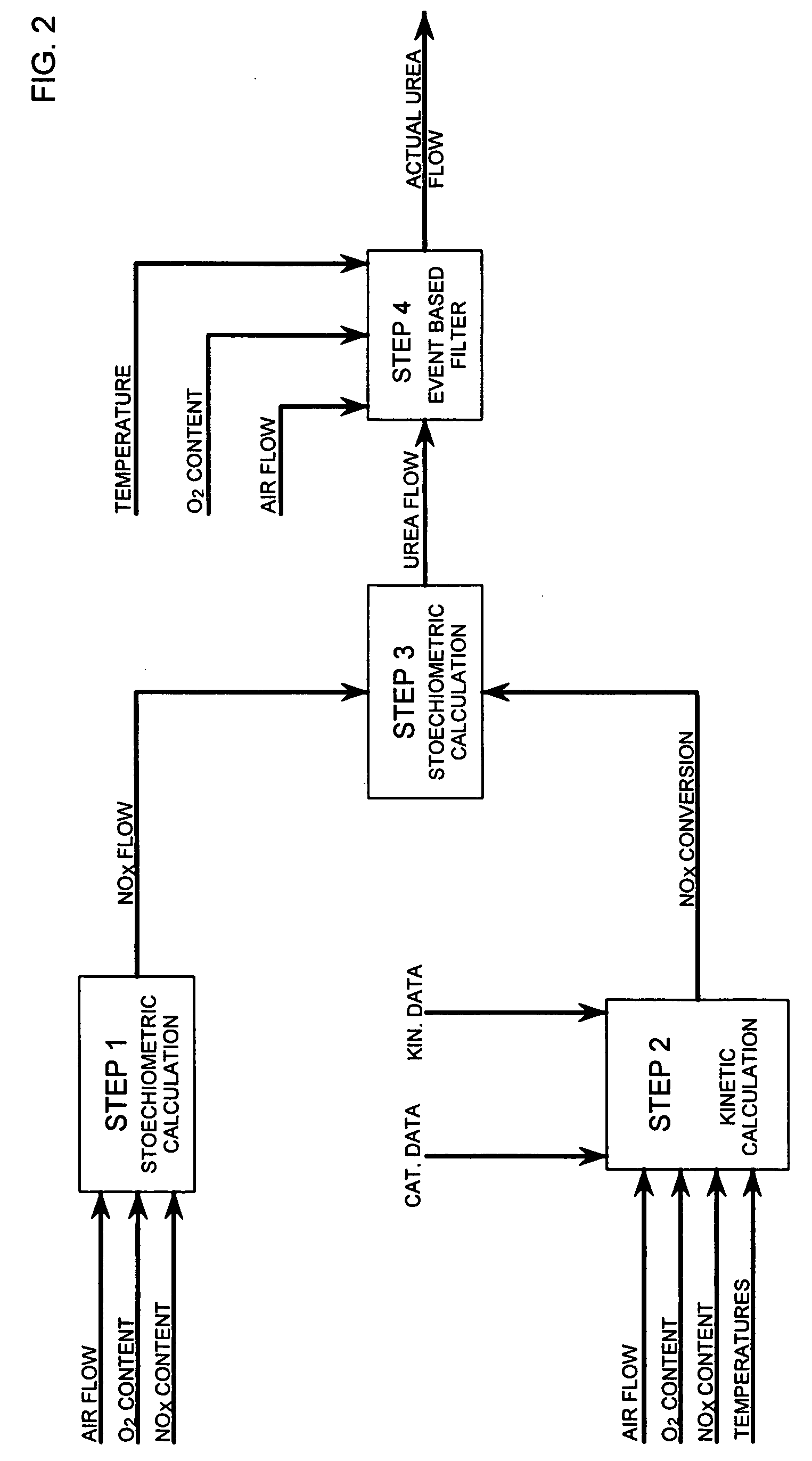Method for controlling injection of reducing agent in exhaust gas from a combustion engine
- Summary
- Abstract
- Description
- Claims
- Application Information
AI Technical Summary
Benefits of technology
Problems solved by technology
Method used
Image
Examples
Embodiment Construction
[0022] A complete combustion of a fuel CHx in combustion engines would be:
CHx+(1+x / 4)O2→CO2+x / 2 H2O (1)
where O2 is oxygen in combustion air.
[0023] In diesel engine driven vehicles combustion takes place with a certain amount of excess air. This results in formation of nitrogen oxides, NOx in the exhaust gas, which is a serious pollution for the environment. NOx can be reduced by ammonia, NH3, which however is difficult to store in vehicles, and an aqueous solution of ammonia or urea, H2NCONH2, is therefore preferred as a reducing agent.
[0024] The ammonia is formed when urea decomposes as it is sprayed into the hot exhaust gas according to the following reaction:
H2NCONH2+H2O→2 NH3+CO2 (2)
[0025] The mixture of exhaust gas and reductant, ammonia, then passes over a catalyst where the nitrogen oxides, nitrogen monoxide, NO and nitrogen dioxide, NO2, react with the ammonia to form nitrogen and water according to at least the following reactions:
4 NO+4 NH3+O2⇄4 N2+6 H2O (3)
and
6 NO2...
PUM
 Login to View More
Login to View More Abstract
Description
Claims
Application Information
 Login to View More
Login to View More - R&D
- Intellectual Property
- Life Sciences
- Materials
- Tech Scout
- Unparalleled Data Quality
- Higher Quality Content
- 60% Fewer Hallucinations
Browse by: Latest US Patents, China's latest patents, Technical Efficacy Thesaurus, Application Domain, Technology Topic, Popular Technical Reports.
© 2025 PatSnap. All rights reserved.Legal|Privacy policy|Modern Slavery Act Transparency Statement|Sitemap|About US| Contact US: help@patsnap.com



